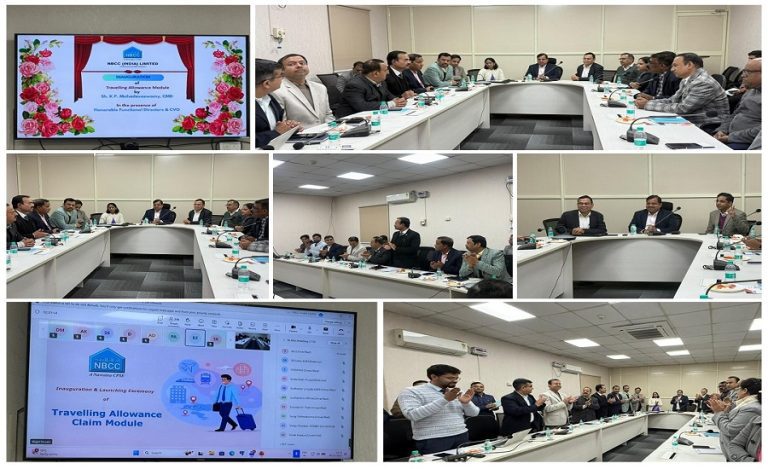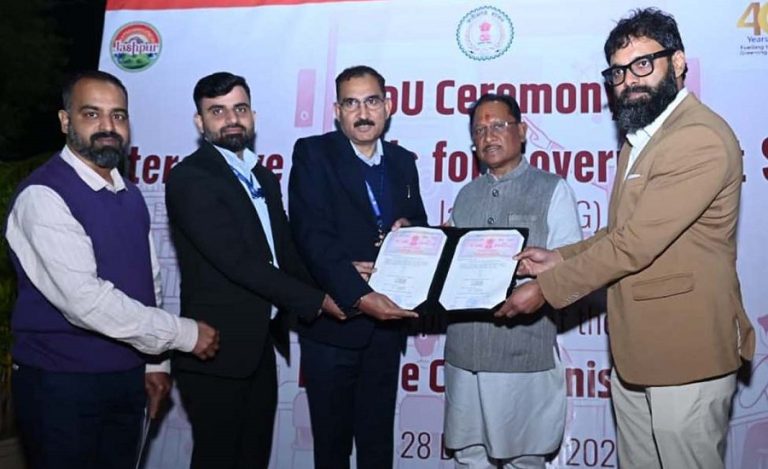Eighteen years ago, the tiger population in Valmiki Tiger Reserve (VTR) in West Champaran district of Bihar was critically low, with only 10 tigers recorded in 2006. However, by 2018, the population had surged to 31. Today, the reserve boasts a thriving population of 54 tigers, infusing Valmiki with remarkable vibrancy. So, what has fueled this extraordinary turnaround?
The success story of VTR goes beyond just the impressive rise in tiger numbers. There has also been a significant increase in the bison population, and the reserve is preparing to reintroduce rhinos, a species native to the area. This remarkable progress is attributed to enhanced conservation strategies, including Habitat Management, Grassland Development, Protection Mechanism Improvement, Use of Technology, and active involvement of the local community in safeguarding the reserve.
At the heart of this transformation was Mr. Surendra Singh, a 2001 batch IFS officer and former deputy director of VTR. His exceptional leadership in the early stages of the reserve’s development played a crucial role in maintaining biodiversity and promoting sustainable development, which ultimately led to the resurgence of the tiger population. The systematic approach not only ensured a comprehensive and integrated conservation strategy but also created jobs and built capacity for local communities.
Indian Masterminds recently spoke with IFS Surendra Singh, who is now serving as the Chief Conservator of Forests and Director of Hariyali Mission in Bihar, to gain deeper insights into this remarkable success story.

THE VTR STORY
The picturesque Valmiki National Park and Tiger Reserve is the only national park in Bihar. Established in 1990, VTR began conservation efforts in 1994 to protect tigers. But the impact became more apparent in 2002 after a court ban on stone mining from the Pandai River. This ban led to a significant increase in green cover. In 2004, when Mr. Singh was appointed to the reserve, a series of conservation initiatives were launched. His primary focus was on enhancing grassland and habitat management for tigers. The Reserve also tackled the critical issue of endangered species, resulting in a substantial increase in the tiger and bison populations.
Mr. Singh explained, “We needed to expand the grasslands to strengthen the prey base. A robust prey base is crucial for the survival of the tigers.”

HABITAT AND GRASSLAND MANAGEMENT
For habitat development, regular weed removal practices were implemented alongside the development and maintenance of grasslands throughout the reserve. Large areas were cleared of weeds, and grass was planted to establish new grasslands. The department made extensive efforts to combat invasive species such as Mikania, Eupatorium, and Dwarf Phoenix, ensuring the restoration of natural habitats.
Over time, these grasslands flourished, leading to a significant increase in herbivore populations across the region. This bolstered the prey base, providing ample food sources for predators. As the availability of prey improved, the tiger population began to rise steadily. Additionally, for effective wildlife management and monitoring, radio-collaring of tigers is being conducted, with proper training provided to field staff.

INCREASING PRAY BASE
To sustain the prey population, the reserve focuses on biomass management of existing grassland patches. Addressing water scarcity, particularly in the eastern and upland areas during the summer, the reserve has constructed artificial water holes. Solar-powered water holes were established to ensure a reliable water supply. Additionally, soil erosion control measures are being implemented through Soil and Moisture Conservation (SMC) work in the reserve.
Mr. Singh noted, “An increase in grassland cover supports the prey population, which in turn enhances the chances of carnivore survival.”

USE OF TECHNOLOGY
Mr. Singh noted that the forest department has significantly enhanced technological use in VTR. Technology has revolutionized conservation efforts, enabling more efficient and effective monitoring of wildlife and ecosystems. Tools such as camera traps and monitoring systems like MSTrIPES are deployed to track the movements of iconic species, including tigers. Additionally, the integration of drones has transformed wildlife monitoring and conflict resolution. Drones provide aerial surveillance capabilities, allowing for real-time observation of wildlife movements and habitat changes. They are also instrumental in managing human-wildlife conflicts by quickly identifying potential hotspots and facilitating timely interventions.
The use of Animal Intrusion Deterrent and Repellent Systems (ANIDERS) has further improved surveillance. These technological solutions are designed to deter wildlife from entering human-inhabited areas using methods such as self-deterrents, barriers, and alarms. ANIDERS effectively prevent wildlife intrusion, minimizing harm to both animals and humans through non-lethal means. These technologies provide valuable data on animal behavior, habitat usage, and potential conflicts with human populations.
PROTECTION MECHANISM IMPROVEMENT
One of the key aspects of the conservation efforts and the increase in the tiger population was the enhancement of protection mechanisms. Strengthening the protection regime along the international border with Nepal was achieved through improved collaboration with the Sashastra Seema Bal (SSB). This partnership successfully curtailed poaching activities and resulted in effective control over wildlife crime.
LOCAL TRACKERS
Local trackers were appointed to provide timely information about wildlife crimes. These trackers had in-depth knowledge of the entire reserve and were highly familiar with the area. Consequently, whenever a suspicious incident occurred, forest officials received immediate reports. This proactive approach led to a significant decline in poaching incidents, which eventually became quite rare.

INVOLVEMENT OF LOCAL COMMUNITY
The participation of the local community in conservation efforts has led to significant benefits, including income generation and skill development. Over 150 nature guides were trained and equipped by the department, and these guides now earn an average income of ₹5,000 to ₹10,000 per month as an alternative source of income.
Strategic planning, community engagement, wildlife reintroduction initiatives, extensive grassland and weed control, habitat management, and collaboration with law enforcement agencies have all contributed to enhanced protection of the reserve. More than 2,600 households have directly benefited from livelihood interventions. As Mr. Singh noted, “The involvement of the community in protection and management efforts has produced excellent results.”

REINTRODUCTION OF RHINO
In addition, efforts are underway to reintroduce rhinos to VTR. A specialized task force was established to assess habitat suitability and security measures. The team’s report has been favorable, identifying specific areas that are well-suited for rhinos and noting improvements in protection mechanisms. The report includes positive recommendations for reintroducing rhinos in the Kamali and Madanpur areas, which are recognized as their natural habitat. This process is currently in progress and is expected to be implemented soon.
Mr. Singh explained, “The task force recommended several measures for reintroducing rhinos, including identifying suitable areas for their return, relocating rhinos from overcrowded habitats, and creating more space to facilitate breeding.”





























